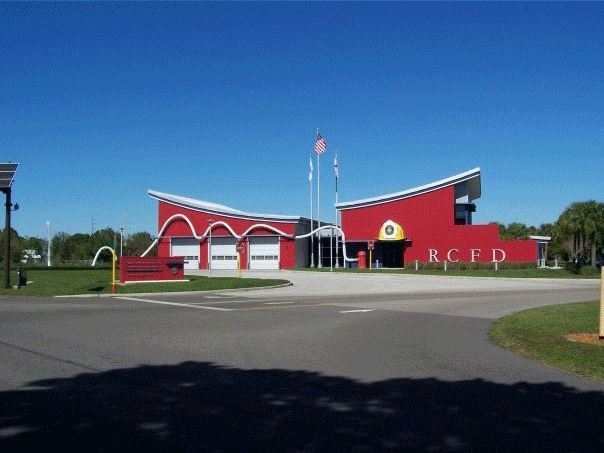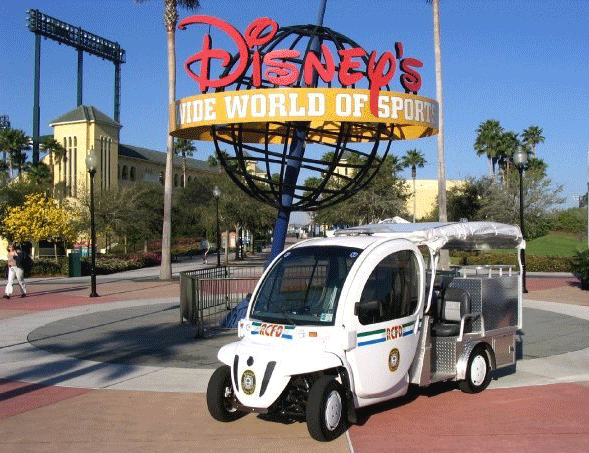
The Other Side of EMS is a series highlighting the many different EMS systems that are not the typical ambulance on the street setup.In this edition of The Other Side of EMS I talked to Jeffrey Armstrong who gave me look behind the scenes of Walt Disney World’s EMS system.
Reedy Creek Emergency Services
The task of providing emergency medical services to the 70,000 people per park at Walt Disney World is contracted to Reedy Creek Emergency Services (RCES). This fire department based service was created in 1968 to provide emergency services to Walt Disney World. RCES’s response personnel are certified by the State of Florida as Firefighters, Emergency Medical Technicians, Fire Safety Inspectors, and Paramedics.

There are 4 fire stations located in the district, which by the way are the nicest and coolest looking stations I have ever seen. Each station has 4 engines, a tower truck, two 4 x 4 brush trucks, a specialized squad truck, a tanker and 7 ALS ambulances. In addition, the department has a special 6 x 6 aerial ladder designed to service the monorail beam in off-road areas.
In 1971, RCES began its delivery of emergency medical services (EMS) to the employees and guests of Walt Disney World. Initially, this service was two-fold. EMS was provided through response to the areas within the District and to provide industrial medical services to the employees of Walt Disney World after the close of their first-aid facilities. In 1976 the Department began the delivery of ALS Paramedic Services within the District. Today, 24-hour shift personnel working out of four fire stations staffing 7 in-service ALS transport units deliver this service. The EMS system is under the medical control of the Orange County Medical Director.
Medical Assistance Response Cart (MARC)

In 2001, Emergency Services implemented a program know as MARC, Medical Assistance Response Cart, to reduce response times. These customized golf carts are the first response to any 911 call placed within the park. According to my wife these are the cutest little ambulances ever. These compact units are fully stocked with some of the best equipment including the electric Stryker stretcher and Lifepak 12 monitor. These carts are able to receive call information via a mounted computer.
The MARC personnel work 8, 10, or 12 hour shifts depending on the need and consist of 24 Paramedics and EMT’s and are not required to be certified Firefighters.
MARC personnel also provide CPR and other medical related training programs to the Walt Disney employees.

There are 6 MARC stations located through out the parks. 1 station per park except Epcot which has 2. Magic Kingdom has 1 station with 2 units. Each MARC unit runs an average of 10 – 14 calls per shift.
The MARC teams are the first response to any 911 medical call. The team will quickly arrive at the patient, evaluate and begin treating. If transport is needed the team will call for one of the 7 ambulances within the parks to transport. The MARC team does not leave the park with the patient.
 Jeffrey Armstrong is an EMT of 18 years and works full time as a MARC team member. To Jeff working as an EMT in the Walt Disney parks is more like an adventure than a job. Everyday Jeff meets and treats people from all walks of life and backgrounds. There are no ‘frequent fliers’ as there are in most systems. But what most of his patients do have in common is their chief complaint, or actually the reason for their chief complaint. Walt Disney World is located in Florida and if you have visited any of the southern states you know that the summer heat and humidity can be brutal. As you would guess Jeff treats many patients with heat injuries but a larger number of patients have pre existing conditions that are exacerbated by the heat. One other unique patient care hazard to EMS at Walt Disney World is the all mighty dollar. No, not what Disney charges the patient for EMS care, in fact that service is free of charge, but these patients have spent $5,000 or more on this vacation and they flat out do not want to go to the hospital. Jeff says a big part of patient interaction is convincing the patient to go to the hospital. The summer months are definitely the busiest being described as ‘organized chaos’ were Jeff stays busy running back to back calls. There are slow days that these medics enjoy, rain days. While other services would see a rise in calls such as MVAs crews at Disney get to enjoy a little down time.
Jeffrey Armstrong is an EMT of 18 years and works full time as a MARC team member. To Jeff working as an EMT in the Walt Disney parks is more like an adventure than a job. Everyday Jeff meets and treats people from all walks of life and backgrounds. There are no ‘frequent fliers’ as there are in most systems. But what most of his patients do have in common is their chief complaint, or actually the reason for their chief complaint. Walt Disney World is located in Florida and if you have visited any of the southern states you know that the summer heat and humidity can be brutal. As you would guess Jeff treats many patients with heat injuries but a larger number of patients have pre existing conditions that are exacerbated by the heat. One other unique patient care hazard to EMS at Walt Disney World is the all mighty dollar. No, not what Disney charges the patient for EMS care, in fact that service is free of charge, but these patients have spent $5,000 or more on this vacation and they flat out do not want to go to the hospital. Jeff says a big part of patient interaction is convincing the patient to go to the hospital. The summer months are definitely the busiest being described as ‘organized chaos’ were Jeff stays busy running back to back calls. There are slow days that these medics enjoy, rain days. While other services would see a rise in calls such as MVAs crews at Disney get to enjoy a little down time.
Working for RCES at Disney also comes with a few benefits. Even though they are not employed by Disney they do enjoy the discounts and privileges. To get an idea of what it is like everyday just follow @JEFF_EMT on twitter. Here are a few tweets from Jeff.
“I am finer than frog hair #myEMSday will be hanging with pre star wars weekends people here at Disney hollywood studios.”
“best part of job #myEMSday to find interesting ways take pictures of #Epcot fireworks.”
“Worth the wait #myemsday (@ Wishes! Nighttime Fireworks Spectacular w/ 12 others) “
“just started #myEMSday adventure for today here magic kingdom.hoping the EMS Gods are good to me today.”
“Just another day here in paradise #myemsday (@ Reedy Creek Emergency Services Medic 12 at Disney Hollywood Studios)”
I think this last one would best sum up how Jeff views his job at the happiest place on earth.
Summary
- Pros
- Access to all the Disney World events and parks
- Top of the line equipment and vehicles
- No frequent fliers
- Rainy days are less busy
- Your kids will love it
- Cons
- Florida heat and humidity
- not much else that I can see
- Considerations
- better study up on heat related injuries
- you need to be able to talk a patient into going to the hospital
For information on employment at RCES click here